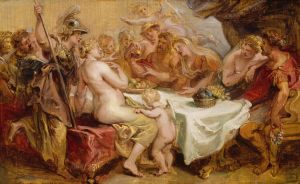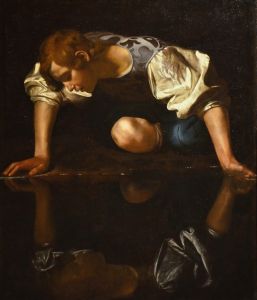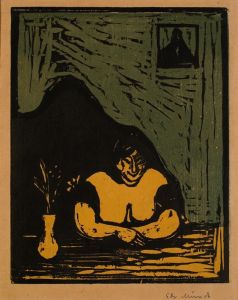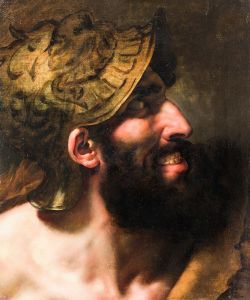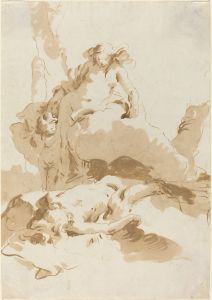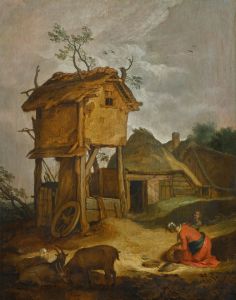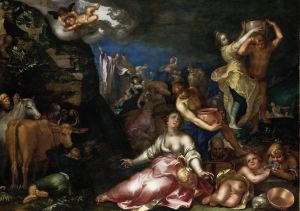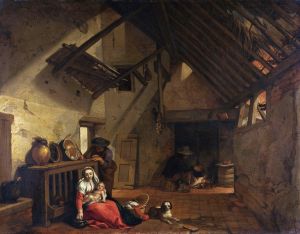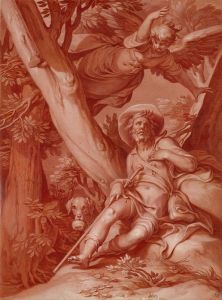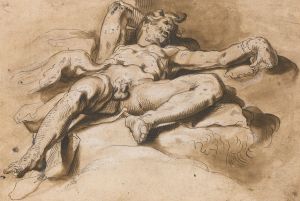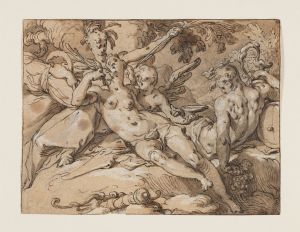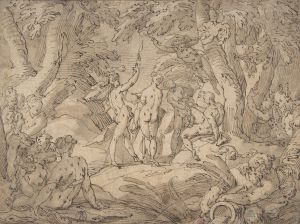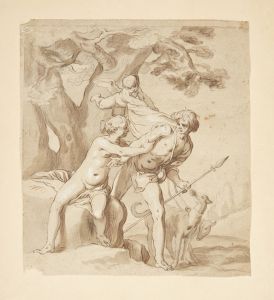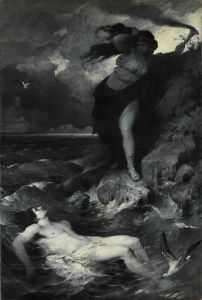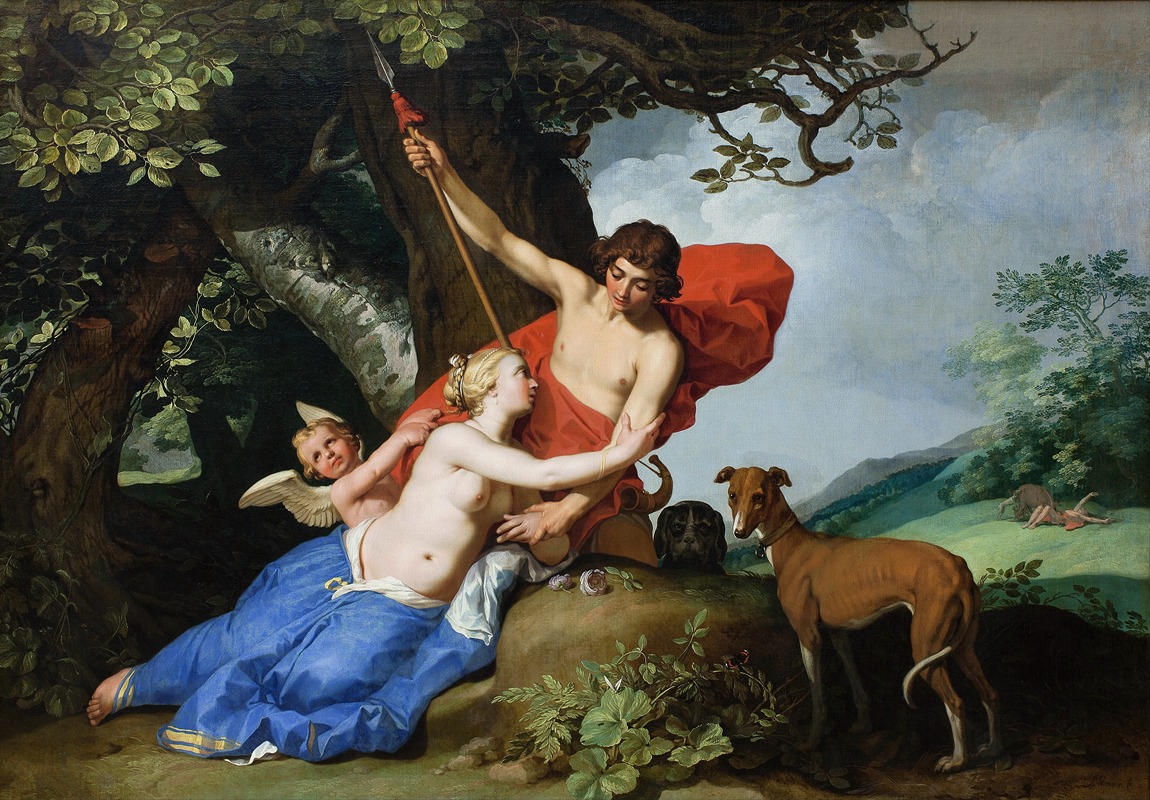
Venus and Adonis
A hand-painted replica of Abraham Bloemaert’s masterpiece Venus and Adonis, meticulously crafted by professional artists to capture the true essence of the original. Each piece is created with museum-quality canvas and rare mineral pigments, carefully painted by experienced artists with delicate brushstrokes and rich, layered colors to perfectly recreate the texture of the original artwork. Unlike machine-printed reproductions, this hand-painted version brings the painting to life, infused with the artist’s emotions and skill in every stroke. Whether for personal collection or home decoration, it instantly elevates the artistic atmosphere of any space.
Abraham Bloemaert's "Venus and Adonis" is a notable work of art from the Dutch Golden Age, a period renowned for its rich artistic output and the flourishing of Baroque painting. Bloemaert, born in 1566 and active until his death in 1651, was a prominent Dutch painter and printmaker known for his versatility and contribution to the development of Dutch art. His oeuvre includes religious subjects, landscapes, and mythological scenes, with "Venus and Adonis" being one of his celebrated mythological paintings.
The painting "Venus and Adonis" depicts a scene from classical mythology, a popular subject among artists of the Baroque period. The story of Venus and Adonis originates from Ovid's "Metamorphoses," a Latin narrative poem that has inspired countless artworks. In the myth, Venus, the goddess of love, falls deeply in love with the handsome mortal Adonis. Despite her warnings, Adonis is tragically killed by a wild boar during a hunt, a narrative that explores themes of love, beauty, and the fleeting nature of life.
Bloemaert's interpretation of this mythological tale is characterized by his masterful use of color, composition, and attention to detail. The painting typically portrays Venus and Adonis in a tender moment, capturing the intimacy and emotional depth of their relationship. Bloemaert's style often combines elements of Mannerism and the emerging Baroque sensibilities, evident in the dynamic poses and the dramatic interplay of light and shadow in his work.
As a leading figure in the Utrecht School, Bloemaert played a crucial role in the transition from Mannerism to Baroque in Dutch art. His influence extended to his students, including notable artists such as Gerrit van Honthorst and Hendrick Terbrugghen, who became prominent figures in their own right. Bloemaert's ability to adapt and evolve his style over his long career contributed to his reputation as a versatile and innovative artist.
"Venus and Adonis" reflects Bloemaert's skill in rendering human figures with grace and expressiveness. The painting's composition often features a harmonious balance between the figures and the surrounding landscape, a testament to Bloemaert's ability to integrate narrative and setting seamlessly. His use of vibrant colors and meticulous attention to detail enhance the emotional impact of the scene, inviting viewers to engage with the mythological narrative on a deeper level.
While specific details about the provenance and current location of Bloemaert's "Venus and Adonis" may vary, his works are held in high regard and can be found in major museums and collections worldwide. Bloemaert's contribution to Dutch art, particularly in the realm of mythological painting, remains significant, and "Venus and Adonis" exemplifies his mastery of the genre.
In summary, Abraham Bloemaert's "Venus and Adonis" is a distinguished example of Dutch Baroque painting, showcasing the artist's skill in depicting mythological themes with emotional depth and technical proficiency. Through his innovative approach and influence on subsequent generations of artists, Bloemaert secured his place as a pivotal figure in the history of European art.





